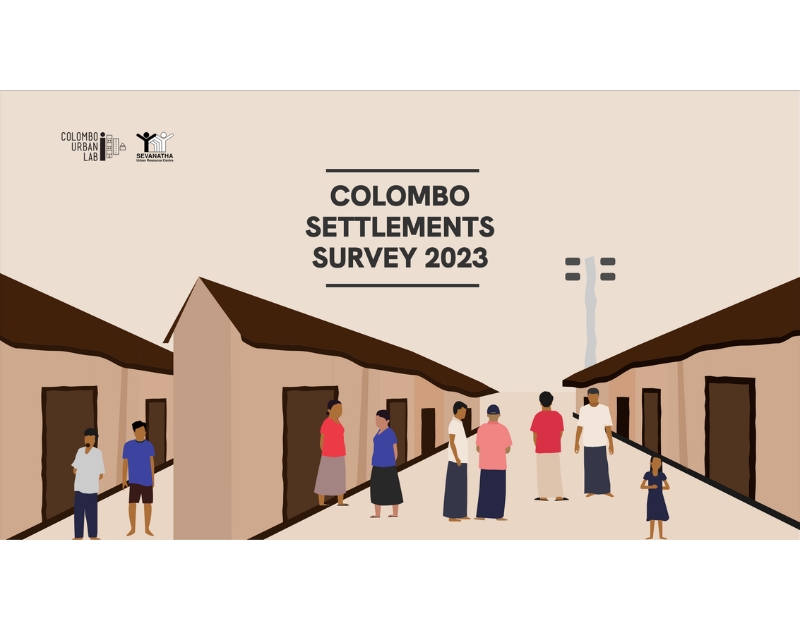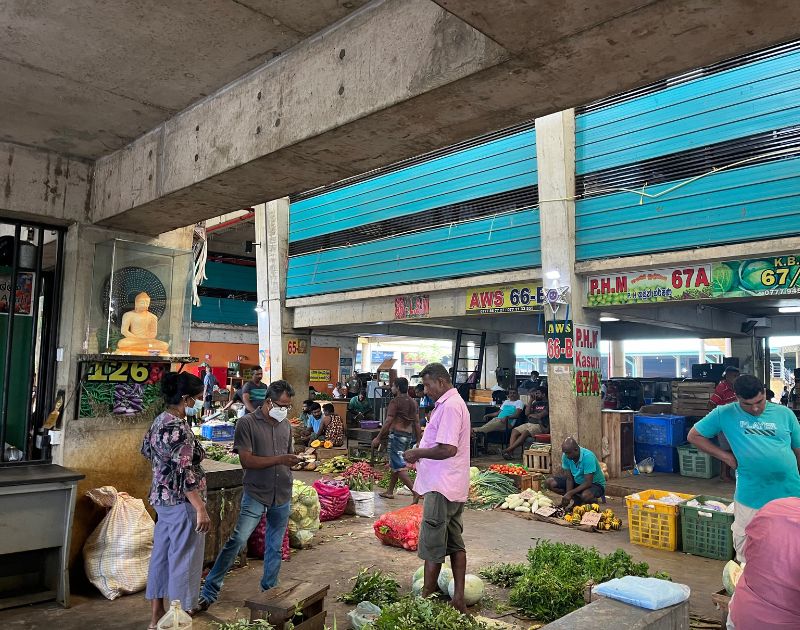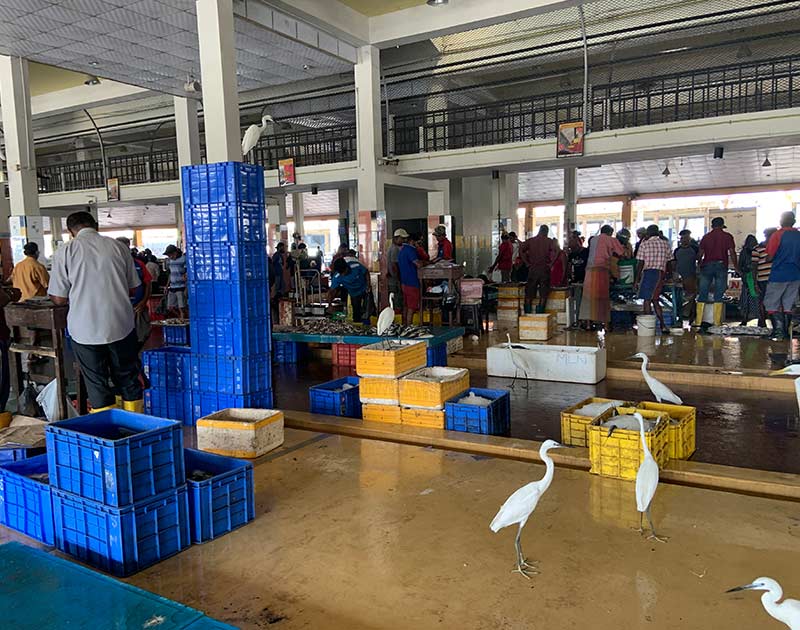
- Home
- Knowledge Insights
- Are Colombo’s working class poor really ‘underserved’?
Rethinking ‘underserved’ – towards a meaningful terminology for Colombo’s urban working class poor
While it may be the most convenient word to refer to any manifestation of urban poverty, ‘slum’ has been rightfully criticised by researchers and residents. Some have called it ‘a term so vague that it lacks analytical capacity’ (Massida, 2023) while others have warned of the ‘mischief that unscrupulous politicians, developers and planners may do with the term.’ In his critique of the United Nations ‘Cities without Slums Initiative’, Alan Gilbert (Gilbert, 2007) puts forward several reasons as to why the word slum should be discarded. Slums do not just describe situations of bad shelter, but also enable sweeping and often pejorative generalisations about the inhabitants of such shelter. The slum is also a relational concept, and may mean completely different configurations of housing, infrastructure, tenure, income and aesthetics depending on whether you are in Lisbon, Nairobi, Cape Town or Mumbai. Moreover, while UN agencies may eventually arrive at technical definitions of a slum, these cannot compete with sensationalised media accounts which contribute to the word being associated with criminality, disease and deviancy.
It is no surprise that many cities prefer a homegrown vocabulary to describe the various ways in which poverty manifests itself in urban built environments; favelas in Brazil, basti in India, barriada in Peru. If these vernacular terms do not correspond perfectly with their English alternatives – this is a feature rather than a bug, as they are able to describe specificities of urban change that are rooted in context and history.
Current terminology stigmatises and excludes the working class poor
Sri Lanka has its own lexicon to describe urban poverty. The Urban Development Authority’s slum and shanty division was established in 1978 and as such offers insight into the two main patterns of urban poverty at the time. Slums refer to old deteriorating tenements or subdivided derelict houses, characterised by permanent materials and notably a legal status of occupancy. Shanties were defined as improvised and unauthorised shelters constructed with non-durable materials on privately owned or state land (UDA, 1979).
Slums, shanties and dilapidated workers’ quarters fall under the broader term of ‘underserved settlements’ which is a catch-all for the neighbourhoods of the urban poor. While this term is used widely by state institutions and local stakeholders, it is not widely used outside the country (UN-Habitat, 2018).
While underserved settlements are understood to contain different types of residences, tenure and service provisioning, these differences have been ignored in policy discourse.
For instance, the Urban Development Authority’s 2022-2024 corporate plan states that 50% of Colombo’s population reside in under-served settlements noting “that they do not have a healthy environment for human habitation and access to basic infrastructure facilities.” The Resettlement Policy Framework of Urban Regeneration Programme defines underserved settlements as areas within the city of Colombo that have a concentration of residential units built on State or private land that is not owned by the residents (Ministry of Megapolis and Western Development, 2018). The boundaries between the definitions of slum, shanty and underserved collapse, and the diversity of housing patterns among the urban poor is erased.
These nuances are further lost in translation from policy paper to newspaper where sensationalised phrases like ‘slum-free Colombo’ and ‘illegal shanty dwellers’ abound, and words informal, illegal, slum and shanty are used interchangeably. This is not merely an issue of semantics. These words hold negative associations, and encourage readers to think of their fellow residents as external to both themselves and the city. How we talk about the urban poor is situated in a broader context of urban development and competing ideas of what Colombo should and will look like, and such words sanction the exclusion of the urban poor from the city. It is crucial that our terminology reflects the complexity of ground level realities, particularly when Sri Lanka’s difference is erased and subsumed by other South Asian narratives.
Latest Colombo Settlements Survey shows majority of settlements are fully upgraded
SEVANATHA Urban Resource Center and Colombo Urban Lab conducted the Colombo Settlements Survey in 2023, the third iteration of a survey of low-income settlements in 5 districts under the Colombo Municipal Council. A total of 1360 settlements were recorded in the survey, and settlement level data on housing, tenure, social capital and infrastructure provisioning offers a detailed snapshot of low-income neighbourhoods in Colombo that counters popular misconceptions.
Calls for a slum-free Colombo in election manifestos and masterplans are redundant as a majority of settlements consisted of in-situ upgraded settlements. 54% of settlements had fewer than 20 houses, revealing that these are not fast growing sprawling slums or shanty towns as seen in Mumbai or Cape Town but rather small and fragmented settlements across the city. Only 2.3% of settlements had over 200 houses. This is not to dispute that shanties exist, but rather to specify that they are not the dominant urban forms in the city’s core districts as they comprise only 0.29% of settlements here.
Moreover, 57.21% of lands on which settlements are located are owned by the occupants and Freehold ownership is the most common type of tenure, although other tenure types such as government issued entitlement cards also exist. Rather than rural migrants newly arrived in the city, Colombo’s settlements are predominantly occupied by long term residents to whom Colombo is their home or ‘gama’: in 70% of settlements, over 80% of families in the settlement had resided for over 30 years. This is reflected in the housing conditions as well, as in 94% of settlements over 80% of housing units consist of permanent structures. Long-standing residents had not only made improvements to houses but also expanded vertically to accommodate growing families. In 600 settlements, over 75% of housing units had houses with multiple storeys. Again, these developments and investments are rarely reflected in portrayals and understandings of the working class poor in Colombo.
Settlements have high levels of service provisioning
Colombo’s settlements have also benefited from impressive gains in service provisioning. In 80% of settlements, a majority of houses had individual toilets. Electrification is at 98%, and 90% of settlements receive regular municipal solid waste collection services. Coverage of piped water has been particularly successful and 97.9% of settlements have individually metered water connections, compared to the 75% in 2012. These gains are a result of the efforts of the NWSDB, which undertook a systematic programme of rolling out individual water connections to low-income households as part of an effort to reduce non-revenue water under the Randiya Programme (NWSDB, 2018).
The above data shows that ‘underserved’ is a severe mischaracterisation, as a majority of households have formal infrastructure provisioning by state institutions. By continuing to deploy this term we erase the incremental upgrading efforts of individual families and communities, as well as the considerable investment by the state. It is even more unsettling to note that these very same infrastructural improvements often rob the working class poor of welfare. The Aswesuma programme’s proxy means testing disqualified many households as superior infrastructural provisioning eg. electricity, drinking water, and permanent housing mark a household as not poor. This puts these communities in a unique situation where they are too poor to be considered legitimate residents of the city, but not poor enough to receive welfare from the state.
This is not to suggest that there are no problems and that all settlements are desirable and have no room for improvement. A majority of settlements fared low in social indicators. 80% of settlements had no active Community Based Organisation, 69% had no access to a community centre and 84% had no access to any credit or savings programme in the settlement. Moreover, settlements face other problems such as outdated and overburdened sewage networks, poorly maintained drains and roads, and subsequent public health issues.
Towards a terminology grounded in reality and context
Better terminology can often provide us with better and more granular data. In 2009, Egypt’s Informal Settlement Development Facility undertook an initiative to replace the traditional word for slum – ‘Ashwa’iyyat’, (meaning disordered or haphazard). Instead, through a comprehensive survey, spaces of urban poverty were reclassified as unplanned or unsafe, depending on the degree of risk inhabitants were subject to. They identified 1.1 million inhabitants in unsafe areas in need of specific interventions, compared to previously bloated estimates of 5.4 million and even 11.9 million thought to be living in slums (Khalifa, 2011).
It is worth remembering that terminology is always in service of agendas. Returning to the totalising nature of slum, Gilbert notes that the word implies that clearance is the only solution. In Sri Lanka, underserved settlements and its accompanying categories of slum and shanties delegitimise the claims of the working class poor to the city on the grounds that they are ‘bad spaces’ without electricity, space, aspirations, mobility or legal tenure. These terms are inaccurate and fuel an imagined problem that justifies a violent and undemocratic solution. Under the Urban Regeneration Programme, such words do the work of manufacturing public consent for the forced relocation of low-income communities into highrise apartments to “liberate” commercially lucrative land. Households are relocated to high-rise apartments that are larger in square footage with the promise of running water, metered electricity and individual toilets (which were facilities that these houses already had), but more limited in the use of space than what the 1-2 perch houses with multiple storeys achieved (Perera, 2020). But the classification of ‘underserved’ forecloses all opposition and alternatives to relocation.
The CSS survey opted to drop underserved from its title because this no longer accurately described the situation on the ground, opting instead for a more neutral ‘settlement or neighbourhood’. There is a difficulty in ensuring that the term conveys difference without generalising, and also a danger that whatever new terminology is used will by semantic creep come to denote the same stigmatising connotations of slum/shanty/underserved.
Reclaiming the vernacular term of ‘watte’ may also prove contentious, but it offers an opportunity to use local terms to describe local patterns of urbanisation and the built environment. Words such as favelas and bastis are not about romanticising poverty, but using indigenous language that describes local contexts, rather than insisting that local contexts are clumsily shoehorned into categories defined by those in the global north (Bhan, 2019).
When words describe things specific to our contexts, we give ourselves permission to be different, both in problems and in solutions. We also take the first step in thinking about how low-income communities can have an identity that does not preclude them from the city, and we work towards a lexicon of belonging rather than exclusion, for the long term residents of Colombo.
References
Massidda, Adriana Laura. “Slums, Villas Miseria, and Barriadas: Why Terms Matter.” Journal of Urban History 49, no. 3 (2023): 552-570.
Gilbert, Alan. “The return of the slum: does language matter?.” International Journal of urban and regional Research 31, no. 4 (2007): 697-713.
Slums and Shanty Division – UDA, The Policy Paper on Slum and Shanty Upgrading in Colombo. 1979.
UN-Habitat, State of Sri Lankan Cities, 2018.
Ministry of Megapolis and Western Development. Resettlement Policy Framework – Urban Regeneration Programme, 2018.
National Water Supply and Drainage Board, Annual Report, 2018.
Khalifa, Marwa A. “Redefining slums in Egypt: Unplanned versus unsafe areas.” Habitat international 35, no. 1 (2011): 40-49.
Perera, Iromi. “We can’t feel the earth beneath our feet anymore”: Dispossession and high-rise living in Colombo.” Polity 8, no. 1&2 (2020): 51-57.
Bhan, Gautam. “Notes on a Southern urban practice.” Environment and Urbanization 31, no. 2 (2019): 639-654.


